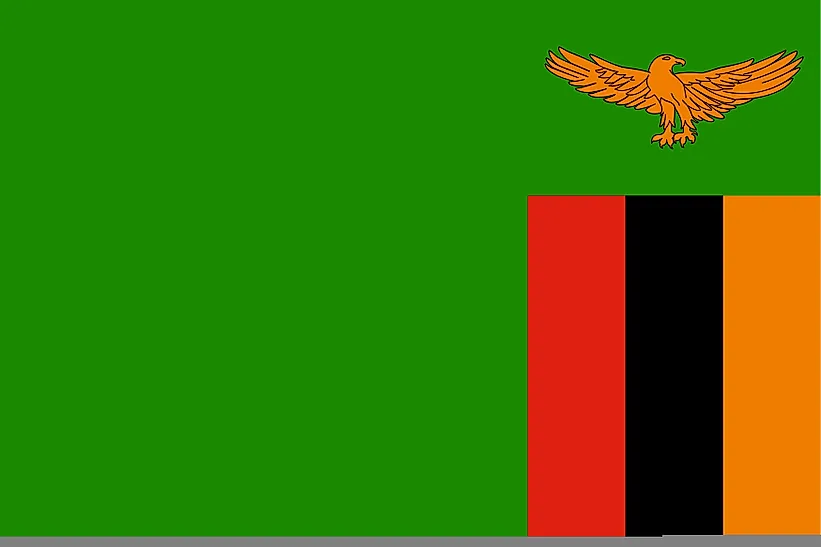
Zambia
| Continent | Africa |
| Capital | Lusaka |
| Population | 15,510,711 |
| GDP | $65.17 Billion |
| GDP per Capita | $3,900 |
| Dialing Code | +260 |
| ISO Code (2-letter) | ZM |
| ISO Code (3-letter) | ZMB |
Zambia Landscapes






About Zambia
Welcome to Zambia, a nation of natural wonders and cultural diversity. With approximately 18.4 million people across 752,618 square kilometers, Zambia combines remarkable wildlife heritage with rich traditions, standing as one of Africa’s most peaceful and naturally beautiful countries.
Geographic Features and Natural Beauty
Zambia’s geography encompasses diverse landscapes dominated by plateaus and river valleys. The country features Victoria Falls (locally known as Mosi-oa-Tunya), the mighty Zambezi River, and numerous other waterways.
The landscape includes savanna grasslands, miombo woodlands, and wetlands. The country’s varied terrain creates diverse ecosystems supporting remarkable wildlife populations.
Protected areas include 20 national parks and 34 game management areas. The country’s commitment to conservation focuses on preserving its unique wildlife while promoting sustainable tourism.
Cultural Heritage and Traditions
Zambian culture represents a rich tapestry of over 70 ethnic groups. The country’s heritage includes traditional ceremonies like Kuomboka and Nc’wala, distinctive music traditions, and strong community bonds.
Traditional arts include wood carving, basket weaving, and pottery. Cultural practices feature ceremonies marking seasonal changes, traditional dances, and the preservation of ancient customs.
Zambian cuisine reflects its agricultural heritage, featuring nshima (cornmeal porridge) as a staple, along with various relishes and traditional beverages. The tradition of communal dining and storytelling remains central to social life.
Historical Journey
Zambia’s history spans from ancient civilizations through colonial period to independence. The country was shaped by various kingdoms and the impact of copper mining.
Significant periods include early settlements, British colonial rule as Northern Rhodesia, independence in 1964 under Kenneth Kaunda, and transition to multi-party democracy in 1991. The country’s peaceful political transitions set it apart in the region.
Modern Economic Landscape
Today’s Zambian economy focuses on mining, agriculture, and tourism. The country possesses significant copper resources and agricultural potential.
Recent initiatives emphasize economic diversification, sustainable development, and infrastructure improvement. Zambia’s young population and natural resources support its development potential.
International Relations and Global Position
Zambia maintains active participation in African organizations while fostering global partnerships. The country’s stability and resources extend its regional influence.
Did You Know?
• Zambia has the world’s largest emerald mining industry?
• Victoria Falls produces the largest sheet of falling water in the world?
• The country was the first in the region to achieve a peaceful transfer of power following multi-party elections?
• Zambia hosts one of Africa’s largest concentrations of leopards?
Conclusion
Zambia represents a unique combination of natural wealth and cultural harmony. From its magnificent waterfalls to its diverse wildlife, from its traditional ceremonies to its modern developments, Zambia continues to evolve while preserving its cultural heritage. As it addresses challenges including economic diversification and environmental protection, Zambia remains committed to progress while maintaining its position as a beacon of peace and natural beauty in Africa.